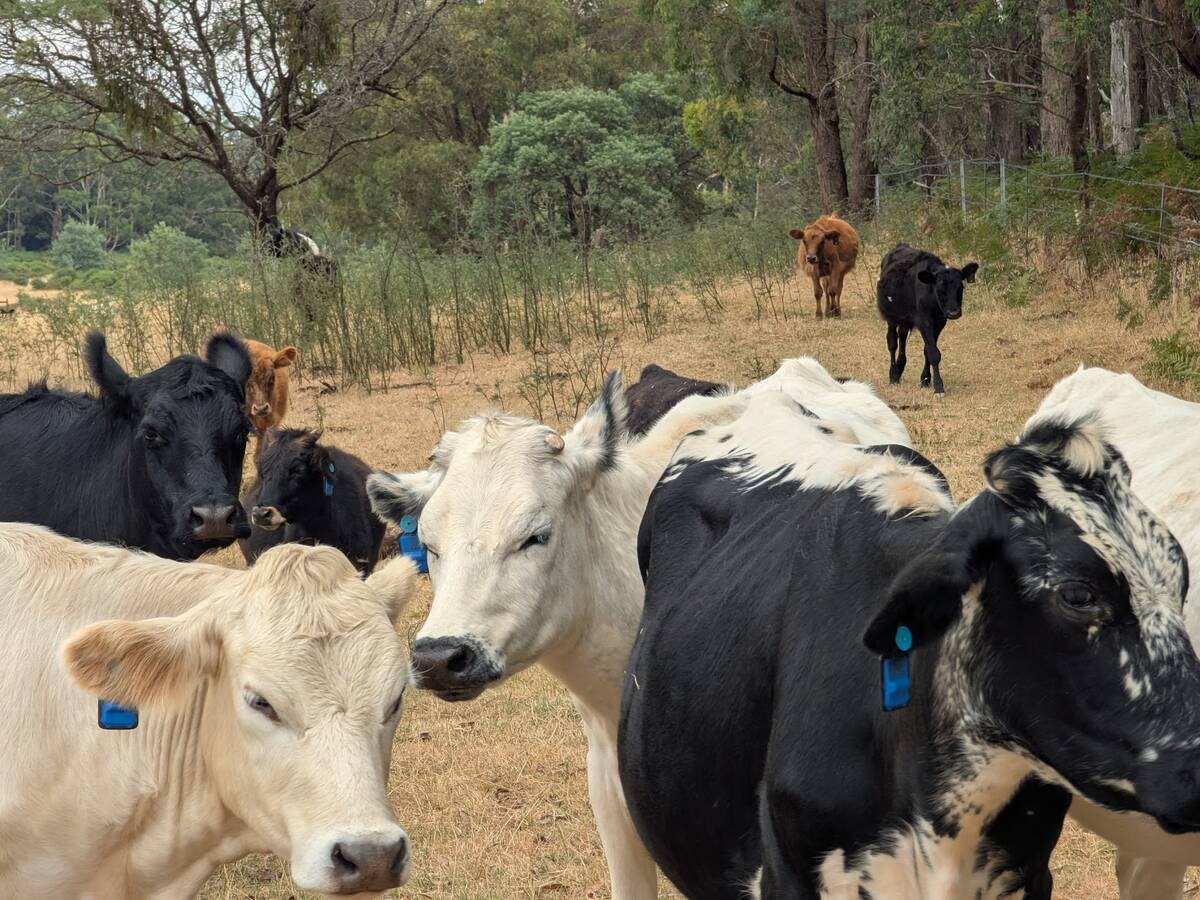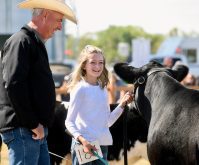Fed cattle
The western Canadian fed cattle market has strengthened to $172.26/cwt, an increase of four per cent or just over $7/cwt. Compared to a year ago, the mid-May average is $8.83/cwt higher. While the average price increase is favourable, there are cost increases and higher break-even levels on these cattle, record-high cost-of-gain and the weakest year-to-date average basis since 2014.
The mid-May cash basis is -$17.87/cwt, $17/cwt under the five-year average. Compared to 2021, the basis is over $35/cwt wider. On a 1,300-lb. finished steer, the comparison between the two years shows the basis shift creating a $461 per head loss.
Read Also

Australian company brings ear-tag tech to Canadian pastures
With Smart Paddock, beef farmers and ranchers can track their cattle through GPS technology
Usually when cost-of-gain is high, carcass weights decrease. But in 2022 carcass weights grew. The last week of April saw the steer carcass weight up 20 lbs. from last year at 945 lbs. Fed cattle slaughter is also running above last year, as many early drought-placed calves of 2021 moved through the system in the first quarter. Slaughter data to May 7 showed steer kill up four per cent at 570,584 while heifer slaughter was one per cent larger at 396,871 head.
Live fed cattle exports, including cows, are up eight per cent to 177,553 head. The Alberta and Saskatchewan cattle-on-feed report for May 1, 2022, showed on-feed numbers nine per cent larger than last year at 1,079,753 head. Year-over-year placements were 11 per cent larger as some cattle destined for grass were diverted onto feed due to poor spring pastures. It seems some heifers intended as replacements are being placed onto feed as the placement increase saw a 30 per cent increase in heifers compared to last year and just a two per cent increase in feeder steers.
Deb’s outlook for fed cattle: Moving through the second quarter and into the third, uncertain direction in beef demand may become an issue for fed cattle prices. While inflation has left no protein source untouched, consumers will begin to make spending and lifestyle choices that affect beef movement and fed cattle prices. Without the added pressure of inflation, summer is typically a sluggish season for beef movement as the summer heat, coupled with more near market-ready cattle, pressures prices lower.
Feeder cattle
While areas of Manitoba are flooding, parts of Alberta are still caught in extreme drought. Areas with good moisture have been quick to respond in their demand for grasser-weight feeder calves. Heavier feeders have seen a sideways trend as feedlots face historically high feed costs and a typically sluggish summer fed market, capping enthusiasm on some weight classes.
At mid-May the 550-lb. feeder steer price was $234.25/cwt which was $2.35/cwt higher than a year ago. The 850-lb. steer average has traded up and down from $188/cwt since early February. At $187.88/cwt, the 850-lb. feeder steer average is $5.38/cwt higher than a year ago.
Feeder cattle exports to the U.S. to the end of April totalled 99,991 head, while imports are estimated at just 51,099 through the first quarter. A strong U.S. dollar, reduced U.S. cow herd, cost-of-feed advantage and wide feeder basis have all contributed to increased U.S. interest. The 850-lb. feeder basis is at -$17.28/cwt. During the same week in 2021, the basis was $15.26/cwt, a difference of $32.50/cwt.
Some areas are seeing drought-forced cow-calf pair movement as feed stacks deplete and hay remains dormant. With more feed either nonexistent or unaffordable, ranchers need to make tough management choices. Cow-calf pair prices are reported to range from $1,600 to $2,400.
Deb’s outlook for feeder cattle: This time of year, so much of the feeder market hangs on weather patterns, early crop reports and the fed cattle trend. Moisture conditions are very mixed across the country. In areas where pasture conditions are good, buyers are looking to increase stocking rates to use grass. However, in many parts of the Prairies, persistent drought limits demand. Much of the lightweight grass cattle need has been filled and the market may soften as available numbers decrease and buyers start to look at heavier cattle. The heavier feeder supply, to either be placed on grass or right on feed, will start to seasonally tighten and the price should respond accordingly. Look for good-quality heavier feeder prices to improve slowly as we move through the summer.
Non-fed cattle
The non-fed market has been the cattle industry’s bright spot, up 43 per cent or $32.29/cwt since the start of the year. The D1,2 cows in Western Canada are once again trading at a premium to the U.S cow price. The D1,2 cow price average in Western Canada is $106.69/cwt as of mid-May, which is 10 per cent or $9.60/cwt higher than a year ago and the highest price recorded since the summer of 2017. Due to the premium to the U.S. market, live cow exports have decreased. Domestic cow slaughter is running seven per cent above a year ago at 167,805 head.
Looking at non-fed bulls, slaughter is down 20 per cent in 2022 at just 4,325 head at the start of May. Exports are up three per cent through the first four months at 9,809 head. Alberta butcher bull prices dropped to $121.63/cwt as of mid-May.
Deb’s outlook for non-fed cattle: After a strong seasonal rally, Canadian cull cattle prices look to have peaked. Lower U.S. canner cow prices, coupled with potential short-term increase in volumes due to weather-related calving losses, will weigh on the market. However, the non-fed market should not see a drastic price reduction through the remainder of the second quarter as consumer demand during inflationary times tends to switch to the lower-priced grinding and trim cuts. Early summer barbeque demand should prevail as well.
















